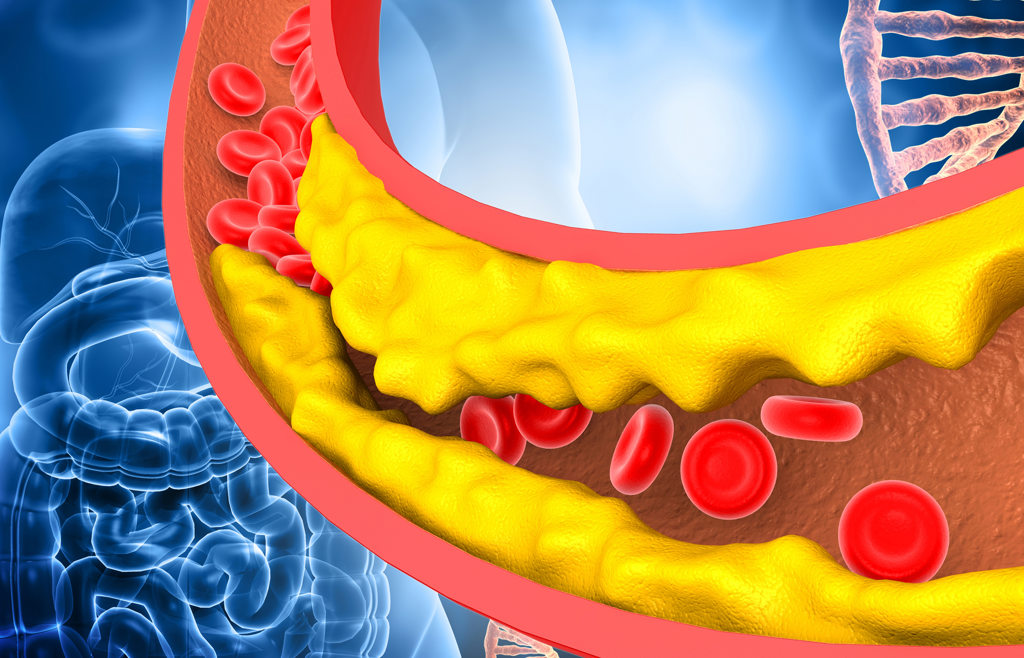What is Cholesterol?

Everyone needs cholesterol; your body uses it to build cells and make vitamins. If there is too much cholesterol in your blood, it sticks to the insides of your blood vessels causing them to harden and become narrower. This can make it easier for blood clots to form, which is what causes heart attacks, strokes and other serious conditions.
“Cholesterol is a waxy substance that travels throughout your body in your blood,” said Franklin P. Bizousky, DO, who is with Penn Highlands Family Medicine in Punxsutawney. “The liver naturally produces all the cholesterol it needs. The culprits behind excess cholesterol are meat and dairy products. These not only contain cholesterol themselves, they also contain saturated and trans fats that cause the liver to produce even more cholesterol. In addition, there is a large contribution of heredity; it is responsible for high cholesterol in people regardless of what they eat. ”
There are two main types of cholesterol: low-density lipoprotein (LDL) and high-density lipoprotein (HDL). HDL is often referred to as “good” cholesterol and LDL as “bad” cholesterol.
“Most of the cholesterol in the body is LDL, and it is what can build up in the walls of the blood vessels,” said Thomas Sisk, MD, who is with Penn Highlands Family Medicine in Finleyville. ”HDL, on the other hand, absorbs excess cholesterol and takes it back to the liver, where it is broken down and flushed from the body. High levels of HDL can lower your risk for heart attack and stroke.”
You can reduce your LDL levels by reducing saturated fats (found in red meat and full-fat dairy), eliminating trans fats (often listed on food labels as partially hydrogenated oils), eating foods rich in omega-3 fatty acids (such as salmon, anchovies, walnuts and flaxseed) and increasing soluble fiber (found in oatmeal, kidney beans, apples, pears and more).
Exercising regularly, quitting smoking, losing weight and limiting alcohol can also reduce LDL levels. And these lifestyle changes are not only linked to decreasing bad cholesterol. They are also associated with boosting levels of HDL, or good cholesterol.
If lifestyle changes are not enough to reach healthy cholesterol levels, your primary care provider may prescribe medication in addition to diet and exercise.
Cholesterol is monitored by a blood test called a lipoprotein panel and measured in milligrams per deciliter (mg/dL).
For adults aged 20 and older, LDL levels should be less than 100 mg/dL, HDL should be 40 mg/dL or higher for men and 50 mg/dL or higher for women, and total cholesterol should be between 125 and 200 mg/dL.
Younger adults should have their cholesterol tested every five years, while men ages 45 to 65 and women ages 55 to 65 should have it tested every one to two years. Your primary care provider may recommend a different screening schedule based on your risk factors, family history and race.
The Family Medicine physicians at Penn Highlands Healthcare provide care when you are ill and guide you toward healthy habits. They care for the whole person —from high cholesterol and rashes to annual physicals and chronic conditions. Clinics, health centers and physician offices are located throughout Pennsylvania. For more information or to find a provider near you, visit www.phhealthcare.org/doctor.
